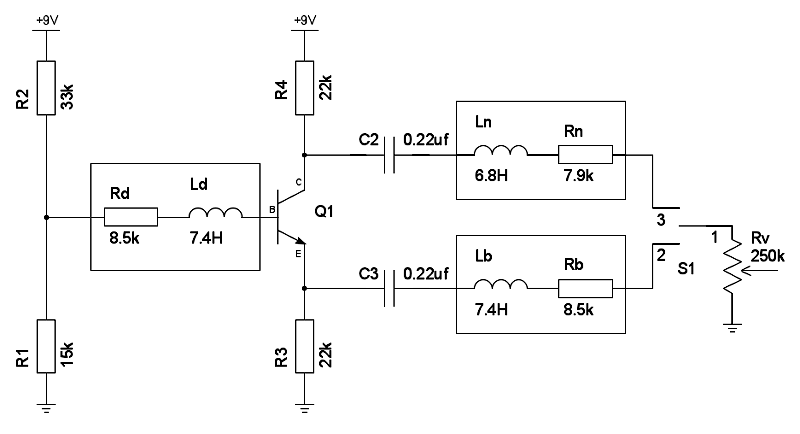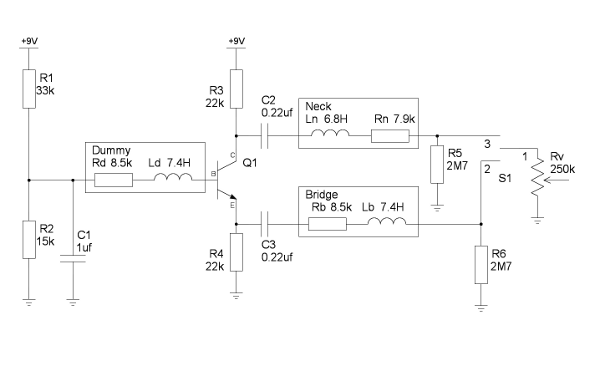I'm considering this for a two pickup RW/RP guitar, which necessitates invertering the coil for one of the pickups. My question is - I understand that the follower described above adequately buffers the dummy, but what about the inverting leg of a single transitor phase inverter? It's much higher impeadance, right?
Consider this:

The boxes are pickups, I slapped in values from a similar pickup. And what about leaving the big honking inductor that is a pickup flapping in the breeze when it's not in circuit? In a passive guitar circuit, they do no harm, but here you've got the end of an inductor that's AC coupled on one end into a circuit thats still functioning.
Consider this:

The boxes are pickups, I slapped in values from a similar pickup. And what about leaving the big honking inductor that is a pickup flapping in the breeze when it's not in circuit? In a passive guitar circuit, they do no harm, but here you've got the end of an inductor that's AC coupled on one end into a circuit thats still functioning.

 .
. 
Comment